Scenes
All images
are the property of Jennifer Dickinson
Please
do not copy or use without express permission.
The village of Apsha is located four kilometers
north of the Ukrainian/Romanian border, in the foothills of the Carpathian
mountains. For me, this land is at its most beautiful in the winter,
when the bright blue sky, the snow, and the slanting sun bring a crisp
richness to the colors of the landscape, even at dawn.
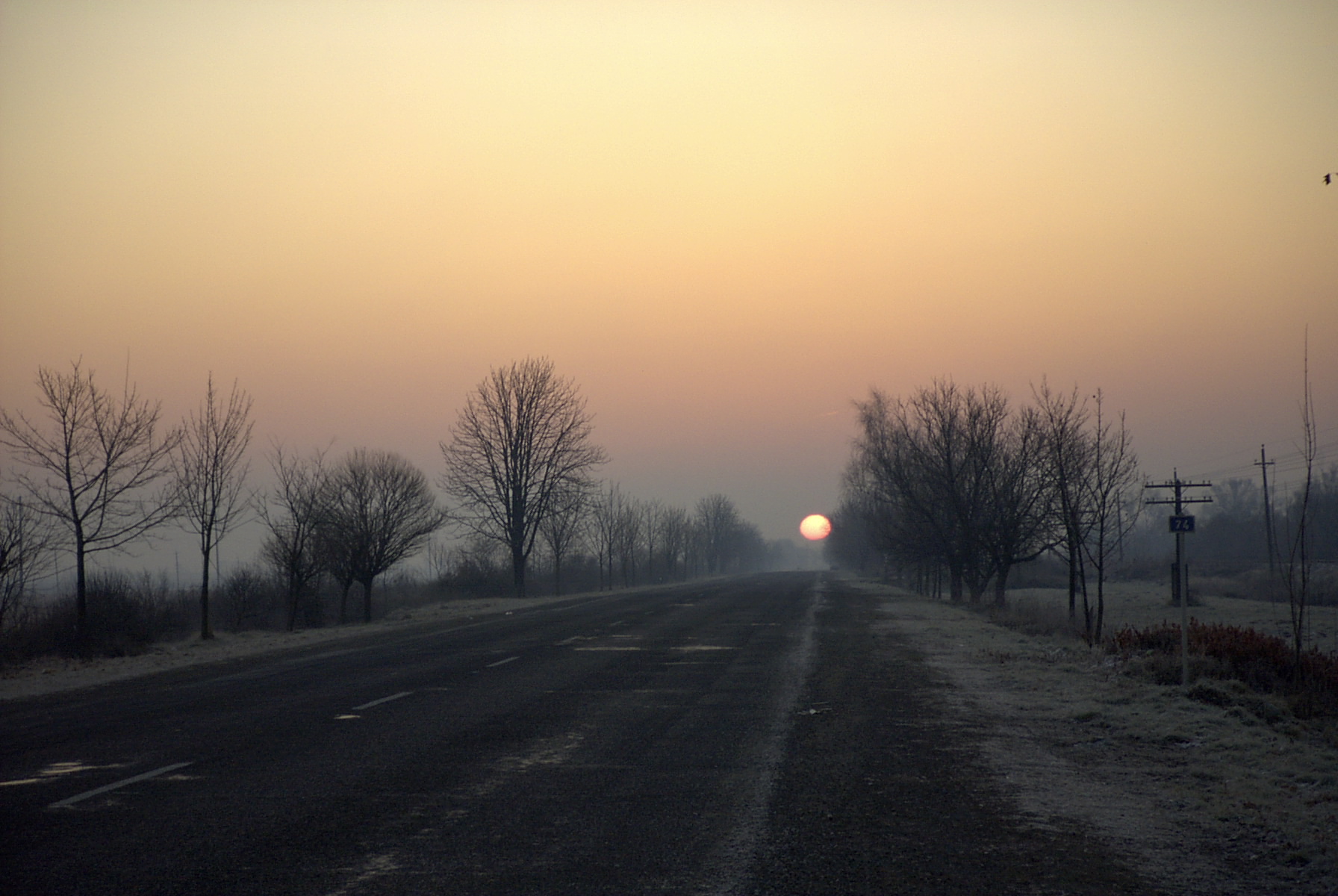
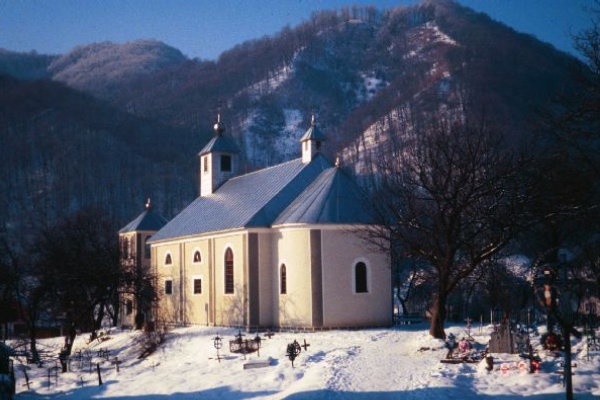
An Orthodox church in a neighboring village.
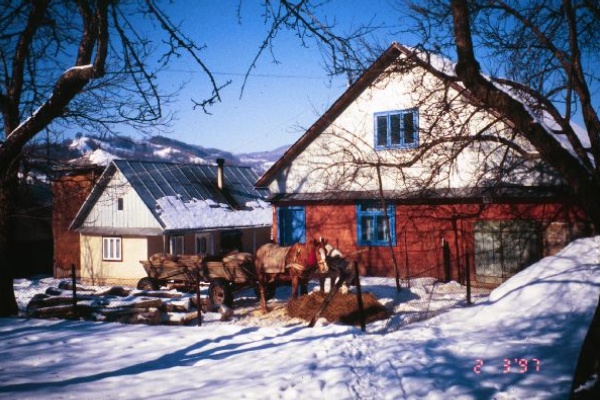
Winter scenes from around the village.
Depending on the snowfall, carts or sleighs
are often used for transportation and hauling in the winter.
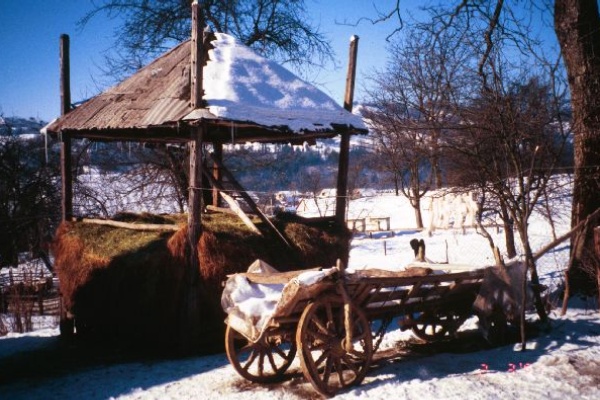
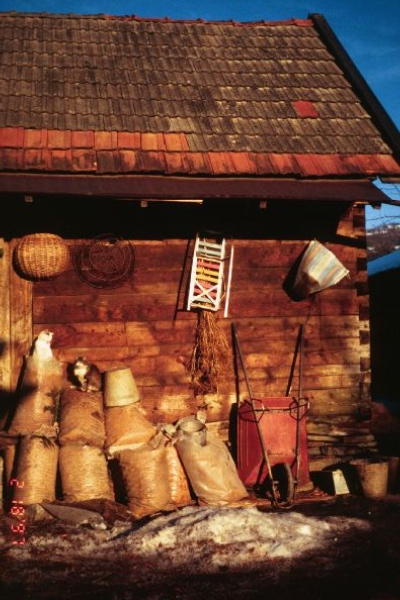
The barn (complete with cats and child's sled)
at the house where I lived in late winter.
Holidays, both religious and secular, offer
opportunities to celebrate, relax, and spend time with friends and family.
Sundays and religious holidays, Ukrainian Orthodox practice forbids most
kinds of work, including most kinds of cooking, handwork, and any farm
work that is not absolutely necessary (like milking the cow).
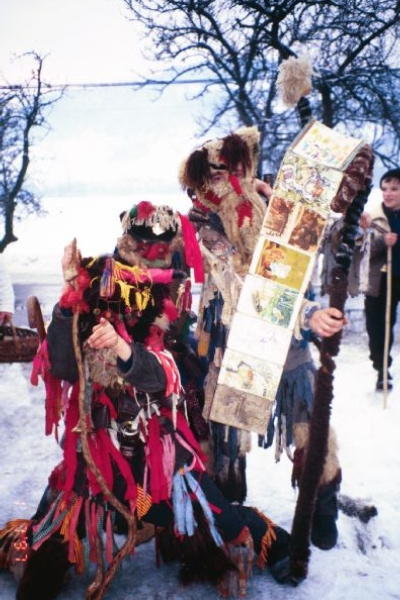
At Christmas, young men dress up as traditional
characters (including shepherds, military men and beggars) and go from
house to house singing carols, acting out bawdy plays, and making mischief.
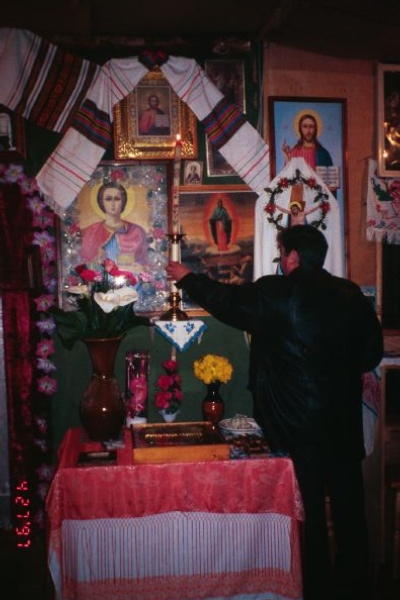
Easter is an especially important religious
holiday, with many believers attending an all-night service, which culminates
in the blessing of each family's Easter basket outside the church at dawn
on Easter Sunday. Above, a villager prepares the altar for a service.
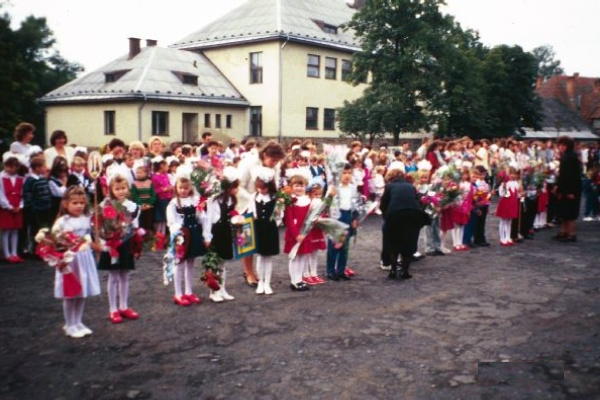
Throughout Ukraine, children celebrate the
first of September, "Schoolchidren's Day." Here Apsha children entering
the first grade line up with flowers for their teachers.
In 1997, the largest plots of land, once farmed
as wheat fields or used for grazing by the local collective farm, were
privatized and divided among villagers, changing the social and physical
landscape of the village.
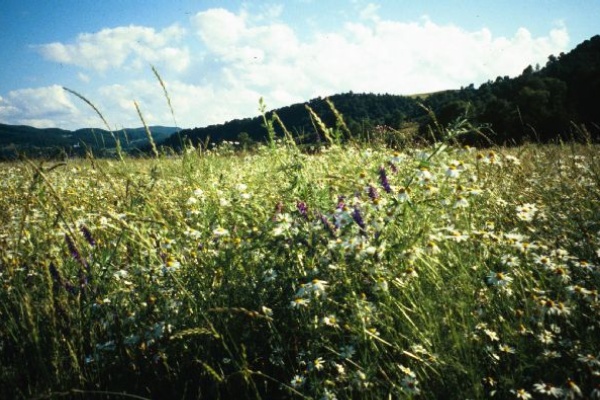
The collective farm's wheat field in 1997.
This is the same field in 2003 - now divided
into small, family-farmed plots.
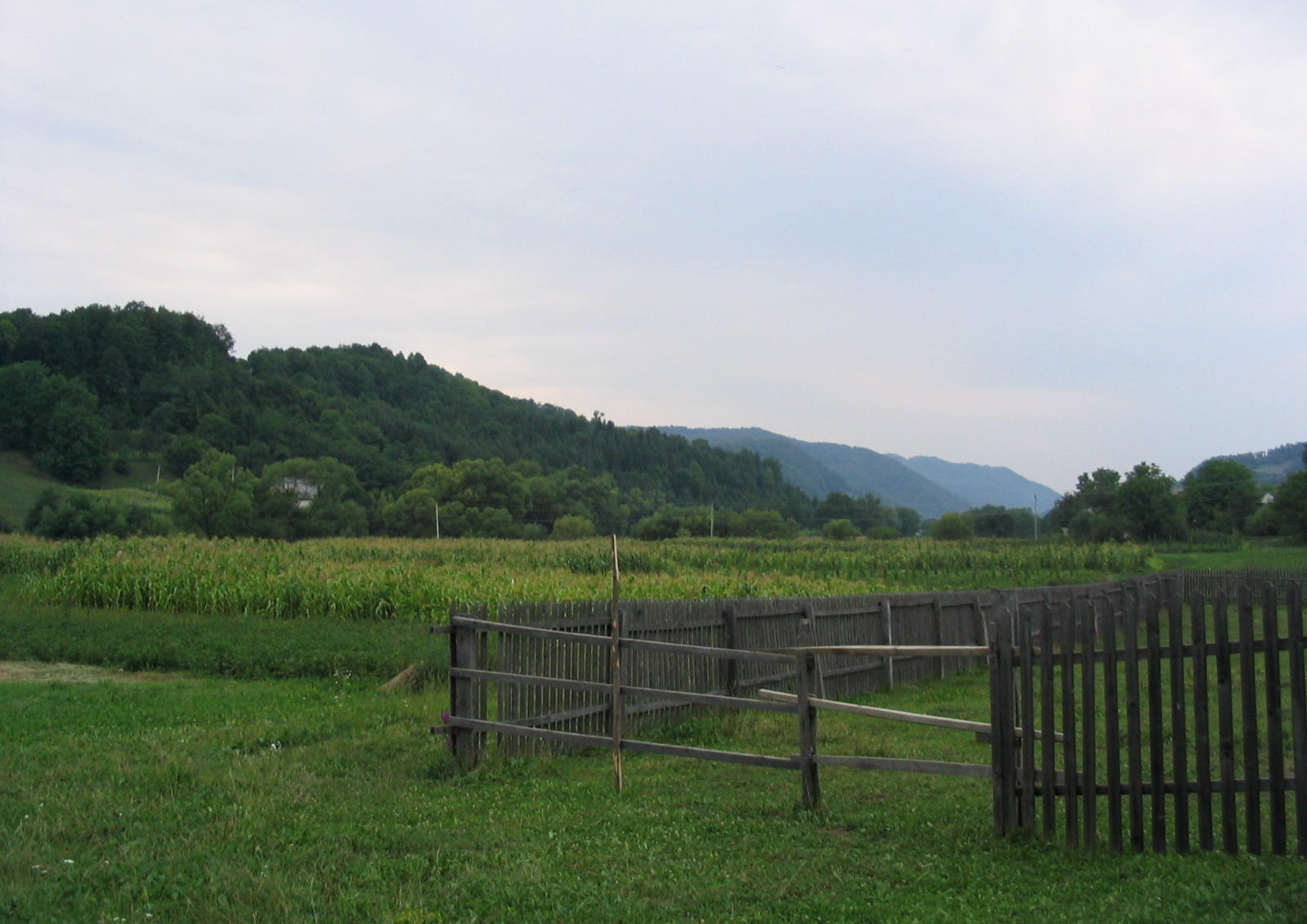
While migrant labor in Russia and Central Europe
has become the chief source of income for most families in the village,
small-scale farming remains central to their survival, and sets the rhythm
by which life in the village is lived.
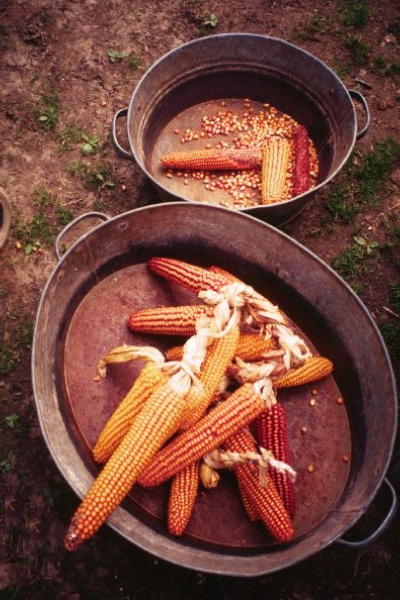
Beautiful grape arbors are a tradition in Zakarapattja.
Arching over household courtyeards, they offer cool shade in the heat of
summer and rich grapes for making homemade wine and jam in the fall.
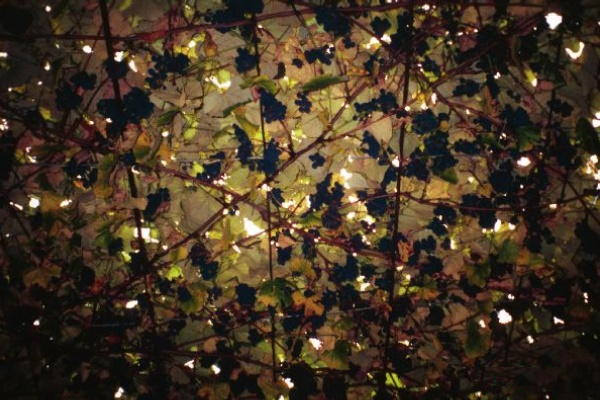
Although many families now own cars, horse
carts still provide the only transportation on many of the narrow paths
leading to hayfields high on the slopes.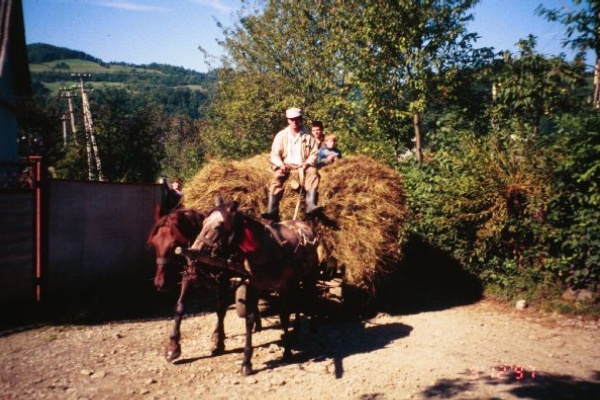
Zakarpattja is a region of contrasts - the
warm, open plain of the Carpathian basin, in the southwest of the region,
gives way to hilly, and then mountainous areas where the weather is harsher
and farmland scarce. One of the most beautiful spots in the area
is Sineverske lake, located high in the mountains.
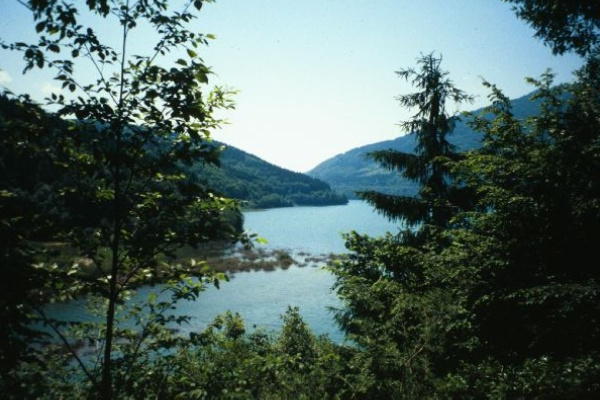
Further to the south and west, at the Romanian
border, is a marker of the geographic center of Europe. Here I am
standing at the border fence between Ukraine and Romania, at the Tysa river.
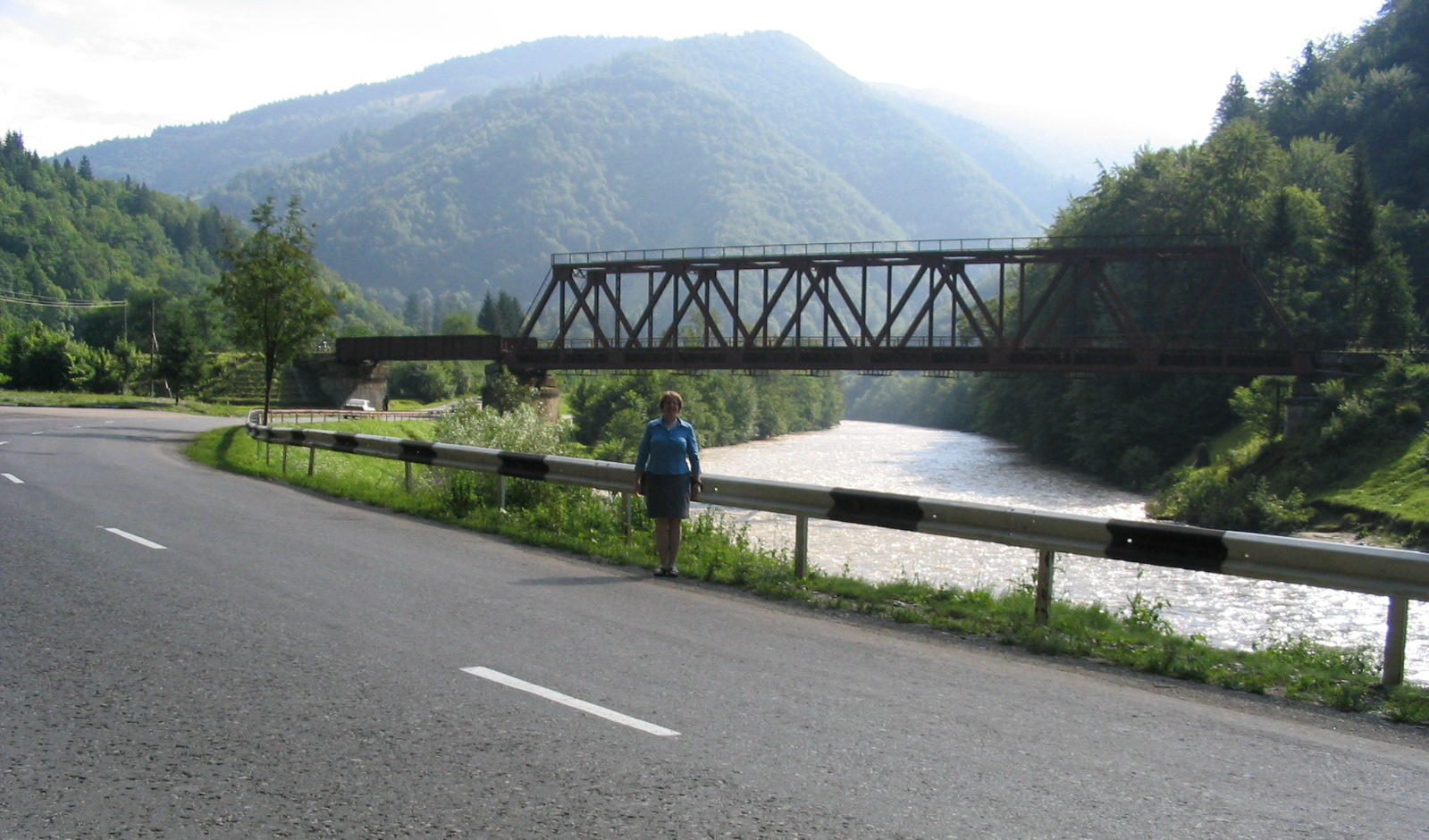
Although houses are often built high on the
hills of Zakarpattja, many villages in the region are strung along the
valleys. Here is a view of Apsha in the summer, looking down from
the apple orchards to the homesteads in the valley.
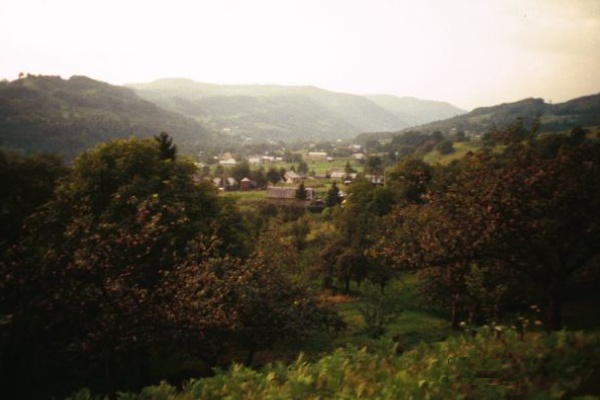
Return to Gallery 1:
Rural Life
Return to Photo
Gallery Main
Home


